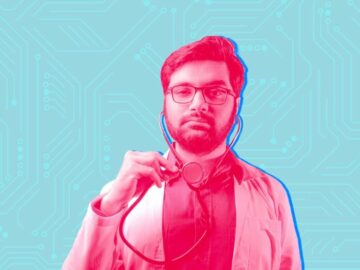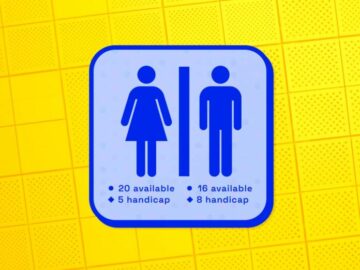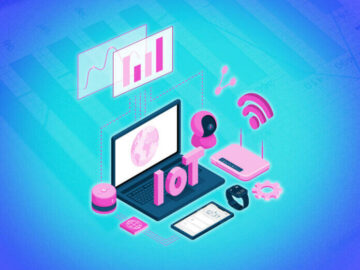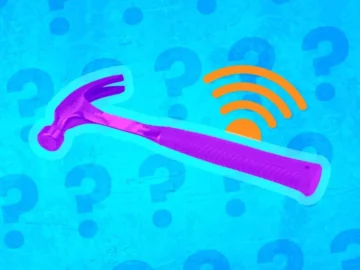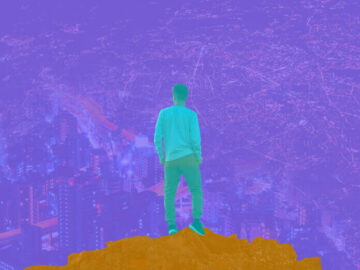
Okay, maybe we’re being a little misleading; by AI cameras, we actually mean computer vision. The recent progress in imagery analysis powered by artificial intelligence makes us wonder if the camera could in fact replace several types of sensors. For numerous use cases, it makes the hardware far easier to manage and provides more insightful data. Visual intelligence has much more to offer than the human eye. It can observe hundreds of places at the same time, zoom down to a submillimeter scale, see in infrared, and much more. Many things currently being monitored by sensors (temperature, movement, proximity) could be verified and, actually, improved by an AI-powered camera.
This article will try to answer, considering your own use case, whether it is best to replace sensors with cameras.
Recent Hardware and Software Improvements
Advancements in computer vision and AI-enabled cameras mean that they are better able to perform functions today.
Cameras Are Higher Quality and Cheaper
With the democratization of HD and 4K cameras, shooting at 60-120 fps (frames per second) or more, computer vision has proper tools to analyze real-time footage better than ever.
Uses such as reading the plate number of a fast-driving car require a rolling high speed to catch a clear image. Full frame sensors and 4K make it possible to monitor a large vision field with only one camera.
Cameras Are Everywhere (and Flying!)
High-end cameras, especially on smartphones, are an easy and qualitative source of data acquisition, directly in the field. When it comes to industrial maintenance, any technician has a tool in his pocket to upload an image or video and consult an AI to find the solution to the issue. In agriculture, a farmer can take a picture of a crop and immediately have information about a potential disease.
Drones have also become an important part of computer vision, especially for agricultural or large industrial installations (power lines, recycling plants, pipelines, etc.). The ability for drones to fly over large areas means that cameras can collect images that would have been far too cost-prohibitive even a few years ago.
The Rise of Edge Infrastructures
Video feeds require more storage space than most sources of data. The cost of uploading several 4K footage continuously on the cloud could be a roadblock for using video. Edge infrastructure addresses this challenge by analyzing the footage locally and uploading only a fraction of its data for further analysis.
With video, data privacy and security are extremely sensitive, especially compared to devices such as agricultural soil sensors. Storing the files locally on edge devices can reduce the risk of their hacking, but above all clarify the responsibilities in the case of data robbery (site manager, client).
Cameras Use Cases in IoT
Seeing Beyond Human Vision
We see the world through our human eyes, which allow us to see with the precision of vision around 30 degrees, at a reasonable distance and appropriate lighting conditions. Cameras are far less limited than that. Especially when several cameras are combined, computer vision has almost no limitations. It can see from several angles and analyze those different feeds in real-time.
High-Definition RGB Camera for Quality Check
In a production chain, the quality check is often made by choosing a random batch of products, maybe 1 percent, and inspecting them. An AI-enabled camera can inspect the entire production without slowing the process and see defaults invisible to the human eye.
Lidar Cameras for Autonomous Vehicles
Lidar cameras use laser sonar to evaluate the distance of objects, which is crucial for autonomous vehicles. This avoids collisions and makes the vehicle aware of its immediate environment. Autonomous vehicles would not be possible without this technology.
FLIR (Infrared) Cameras for Heat Detection
Forward-looking infrared (FLIR) cameras provide precise thermography to detect overheating on an electronic card, a pipe, or a machine. In this case, one doesn’t need any complicated algorithms to receive an alert. The FLIR camera is working exactly like a sensor. FLIR cameras are now being deployed in response to COVID-19. They can monitor people’s temperature at a reasonable distance, in a non-intrusive way. They have also been used by the military for years.
Replacing Multiple Sensors with a Single Camera
Refrigerators in a convenience store can be inventoried automatically by adding several sensors (weight, temperature). AT&T innovation foundry developed a camera-mounted system that replaced all those sensors. The camera detects when a given shelf is going low on stock and monitors temperature in real-time.
Limitations of Cameras Over Sensors
Occlusion
In many cases, installing only one camera won’t do the trick. In order to tackle occlusion issues (an object hidden behind another one), several cameras on several angles are necessary. A startup from Sony invented a multi-camera AI-powered solution to monitor animal health, especially heat detection in a cow farm. The linked cameras identify when a cow is mounting another one, even if one of several angles is occluded. This, however, is only possible if multiple cameras are in use.
Power and Network Availability
A camera filming continuously can’t be powered by a battery only, hence a direct power supply is needed. Solar panels are not enough in most cases if the camera needs to run at night. Moreover, for an HD feed to be uploaded in the cloud, 4G is necessary.
Those two specifications make it difficult to install a stand-alone camera in some remote areas when a low consumption sensor can run for years.
Analysis Resources
Ingesting several video feeds and teaching the computer to understand them is actually a far more complex mission than the regular IoT sensor data analysis. If even something as simple as heat detection with a FLIR camera is largely accessible to any individuals or SMEs, going through the AI path can be extremely costly and the results uncertain.
Machine and deep learning engineers who can handle the analysis work are in high demand, so the cost of recruiting one can be the main blockade for startups or small companies.
Should You Opt for Cameras Instead of Sensors?
As every use case is different, we will explain the three examples where it’s definitely worth considering the investment.
- You need a sensor-like camera, let’s say for overheating detection in a factory machine. Your camera can replace several dozens of sensors. The video feed is stored locally and cameras are easy to install (network, power supply). Go for cameras.
- You need visual intelligence more than a camera, for example, to verify that your workers enter a construction site with their hard hats on. The use case is common and you will easily find ML algorithms pre-trained for this task. A camera with pre-build image recognition software makes more sense than installing a sensor on every hard hat. The investment can be reused on all future construction projects. But once a use case gets too specific, its reusability falls since the development cost can quickly exceed the potential benefits.
- You need a very specific, made-to-measure visual intelligence solution. Imagine a multinational company producing security glass doors. They want to detect defaults in the glass on the assembly line. They need a dedicated team to handle this mission for several months. They previously prepared this project by amassing and tagging several thousands of images tagged to train the AI. Moreover, the ROI will be accelerated by implementing the solution on several production sites.
As for other IoT use cases, it’s still likely the switch to computer vision will be too costly or risky. Though cameras can enhance IoT solutions, they do not always fit the IoT ecosystem, and video feeds cannot properly transit through LPWAN networks.
Source: https://www.iotforall.com/ai-cameras-can-they-replace-iot-sensors
- 4k
- About
- acquisition
- agriculture
- AI
- algorithms
- All
- analysis
- around
- article
- artificial
- artificial intelligence
- autonomous
- autonomous vehicles
- battery
- being
- BEST
- cameras
- car
- cases
- Catch
- challenge
- Cloud
- Common
- Companies
- company
- complex
- Computer Vision
- construction
- consumption
- could
- COVID-19
- crop
- data
- data analysis
- data privacy
- Data Privacy and Security
- deep learning
- Demand
- Detection
- Development
- Devices
- different
- Disease
- distance
- Doesn’t
- Drones
- easily
- ecosystem
- Edge
- Engineers
- Environment
- especially
- etc
- example
- eye
- factory
- farm
- filming
- fit
- For Startups
- full
- functions
- future
- FX
- going
- hacking
- Hardware
- Health
- High
- HTTPS
- Hundreds
- identify
- image
- Image Recognition
- immediately
- implementing
- important
- industrial
- information
- Infrastructure
- Innovation
- Intelligence
- investment
- iot
- issues
- IT
- large
- laser
- learning
- Limited
- Line
- locally
- Military
- Mission
- ML
- ML algorithms
- months
- more
- needed
- network
- networks
- offer
- order
- Other
- picture
- pipe
- plants
- power
- Precision
- privacy
- Privacy and Security
- process
- Production
- Products
- project
- projects
- provide
- provides
- quality
- Reading
- real-time
- recruiting
- recycling
- reduce
- replace
- response
- Results
- Risk
- ROI
- Run
- Scale
- security
- sense
- sensors
- Simple
- Sites
- Slowing
- small
- smartphones
- SMEs
- So
- Software
- solar
- solar panels
- Solutions
- something
- Sony
- Space
- speed
- startup
- Startups
- stock
- storage
- store
- supply
- Switch
- system
- Teaching
- Technology
- the world
- Through
- time
- today
- tool
- tools
- transit
- us
- vehicle
- Vehicles
- Video
- vision
- WHO
- without
- Work
- workers
- working
- world
- worth
- would
- years
- zoom

